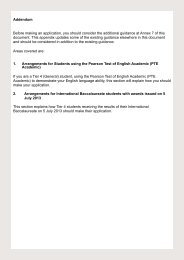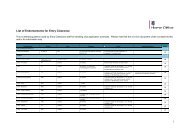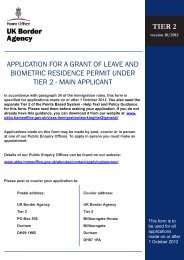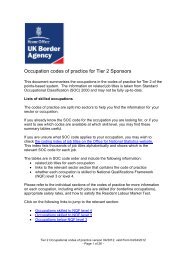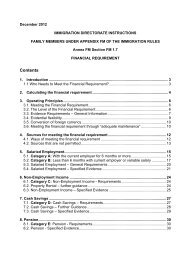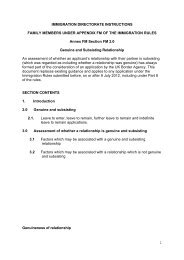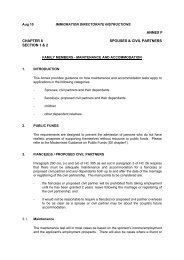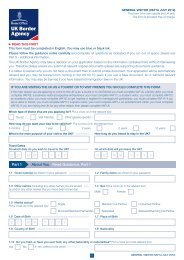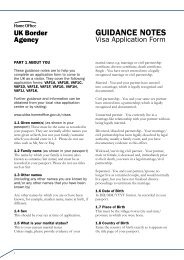COI Report March 2012 - UK Border Agency - Home Office
COI Report March 2012 - UK Border Agency - Home Office
COI Report March 2012 - UK Border Agency - Home Office
You also want an ePaper? Increase the reach of your titles
YUMPU automatically turns print PDFs into web optimized ePapers that Google loves.
7 MARCH <strong>2012</strong> SRI LANKA<br />
1.04 There are three main languages spoken: Sinhala (official and national language) 74 per<br />
cent of the population, Tamil (national language) 18 per cent, and English (commonly<br />
used in Government and spoken competently by about 10 per cent of the population).<br />
(CIA World Factbook, Sri Lanka 6 , 27 December 2011).<br />
1.05 A letter from the British High Commission (BHC) in Colombo dated 27 September 2011 7<br />
observed that:<br />
―There are the two national and official languages in Sri Lanka, Sinhala which is spoken<br />
by 74% of the population and Tamil which is spoken by 18% of the population. English<br />
is commonly used in government and business, and is spoken competently by around<br />
40% of the population. Tamil is mainly spoken in Northern and Eastern Provinces, and<br />
in the Hill Country amongst Indian Tamils working on the tea plantations. Persons of all<br />
ethnic backgrounds in these areas may use Tamil as their first language.‖<br />
1.06 As recorded by the Sri Lanka Department for Census and Statistics (Statistical Abstract<br />
2010, Chapter II, table 2.10 website accessed on 1 June 2011) 8 the highest<br />
concentration of Sinhalese population is in the districts of Gampaha, Colombo,<br />
Kurunegala, Kandy and Galle. The districts of Colombo, Ampara, Gampaha, Kandy,<br />
Puttalam and Nuwara Eliya have a high concentration of Tamils (figures from the 2001<br />
census). However, data from Jaffna, Mannar, Vavuniya, Mullaitivu, Kilinochchi,<br />
Batticaloa and Trincomalee districts, in which the 2001 census enumeration was not<br />
completed, were not included.<br />
1.07 A British High Commission (BHC) letter dated 9 November 2011 9 reported:<br />
―The Department of Census and Statistics – Sri Lanka produces estimated mid-year<br />
population figures, the latest being for 2008. These figures show that the estimated<br />
population of Sri Lanka as 20,217,000. The estimated population of Colombo District is<br />
given as 2,488,000.<br />
―The Central Bank of Sri Lanka produces yearly country profiles, the latest of which is<br />
2010. They estimated the population of the country as 20,653,000 and the population of<br />
Western Province, which includes the districts of Colombo, Gampaha and Kalutara as<br />
5,865,000.‖<br />
More information can be found in the Sri Lanka Socio-Economic Data 2011, published<br />
by the Central Bank of Sri Lanka in June 2011.<br />
6 CIA - The World Factbook – Sri Lanka<br />
https://www.cia.gov/library/publications/the-world-factbook/geos/ce.html updated on 27 December 2011<br />
Date accessed 27 January <strong>2012</strong><br />
7 British High Commission Colombo, letter dated 27 September 2011<br />
8 Sri Lanka Department for Census and Statistics, Statistical Abstract 2010 – Chapter II (Population),<br />
Table 2.10, Population by ethnic group, census years<br />
http://www.statistics.gov.lk/abstract2010/chapters/Chap2/AB2-10.pdf date accessed 1 June 2011<br />
9 British High Commission Colombo, Letter dated 9 November 2011<br />
The main text of this <strong>COI</strong> <strong>Report</strong> contains the most up to date publicly available information as at 3 February <strong>2012</strong>.<br />
Further brief information on recent events and reports has been provided in the Latest News section<br />
to 2 <strong>March</strong> <strong>2012</strong>.<br />
15



